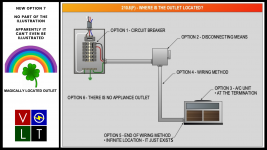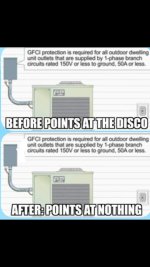mbednarik
Member
- Location
- central iowa
- Occupation
- Electrician
A wire type EGC requirement would have yielded the same protection IMO without the fight.That substantiation was shot down by the standards council for lacking technical merit that installation had no EGC.



